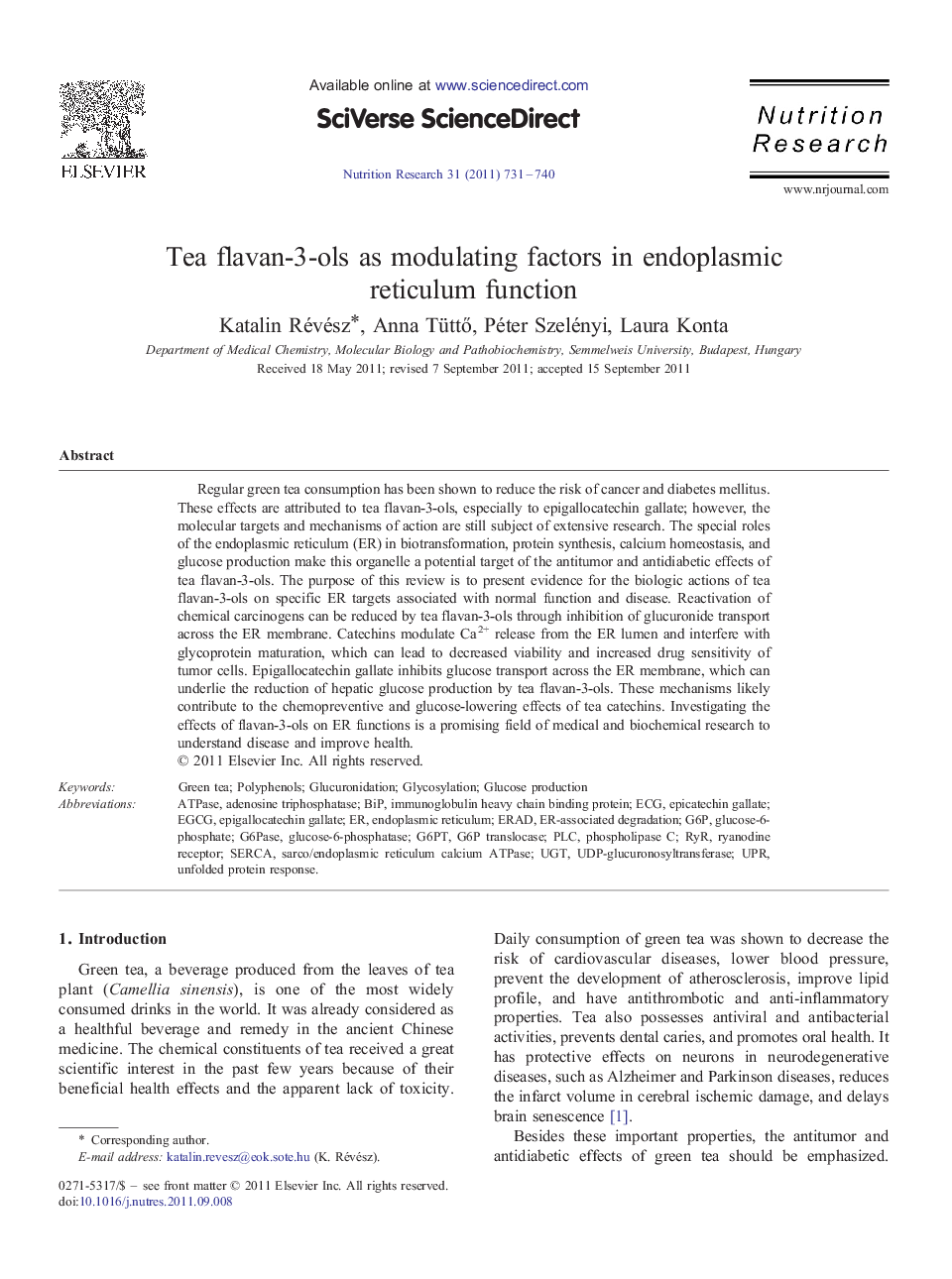| Article ID | Journal | Published Year | Pages | File Type |
|---|---|---|---|---|
| 2809126 | Nutrition Research | 2011 | 10 Pages |
Regular green tea consumption has been shown to reduce the risk of cancer and diabetes mellitus. These effects are attributed to tea flavan-3-ols, especially to epigallocatechin gallate; however, the molecular targets and mechanisms of action are still subject of extensive research. The special roles of the endoplasmic reticulum (ER) in biotransformation, protein synthesis, calcium homeostasis, and glucose production make this organelle a potential target of the antitumor and antidiabetic effects of tea flavan-3-ols. The purpose of this review is to present evidence for the biologic actions of tea flavan-3-ols on specific ER targets associated with normal function and disease. Reactivation of chemical carcinogens can be reduced by tea flavan-3-ols through inhibition of glucuronide transport across the ER membrane. Catechins modulate Ca2+ release from the ER lumen and interfere with glycoprotein maturation, which can lead to decreased viability and increased drug sensitivity of tumor cells. Epigallocatechin gallate inhibits glucose transport across the ER membrane, which can underlie the reduction of hepatic glucose production by tea flavan-3-ols. These mechanisms likely contribute to the chemopreventive and glucose-lowering effects of tea catechins. Investigating the effects of flavan-3-ols on ER functions is a promising field of medical and biochemical research to understand disease and improve health.
